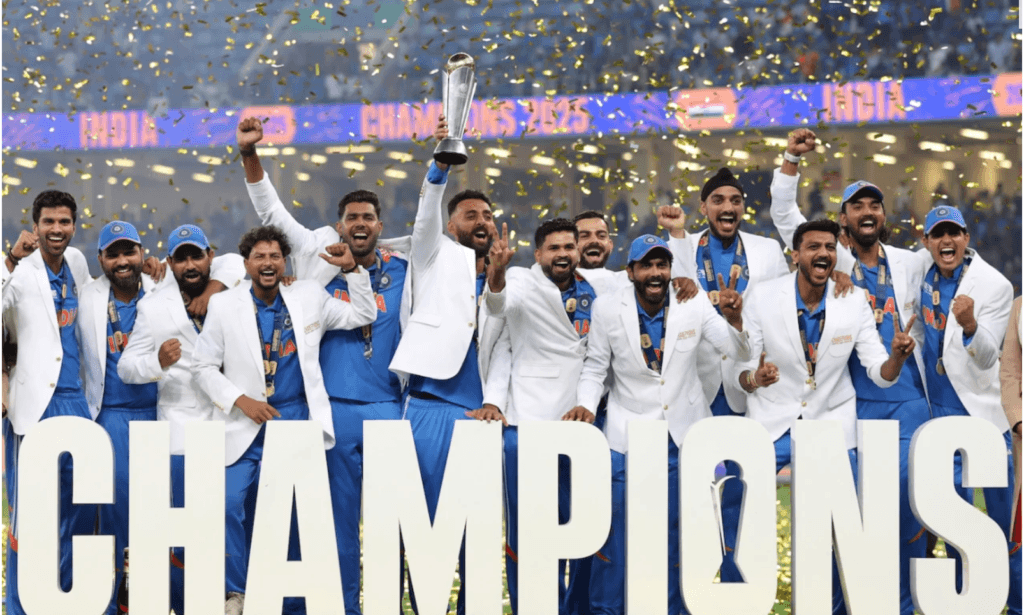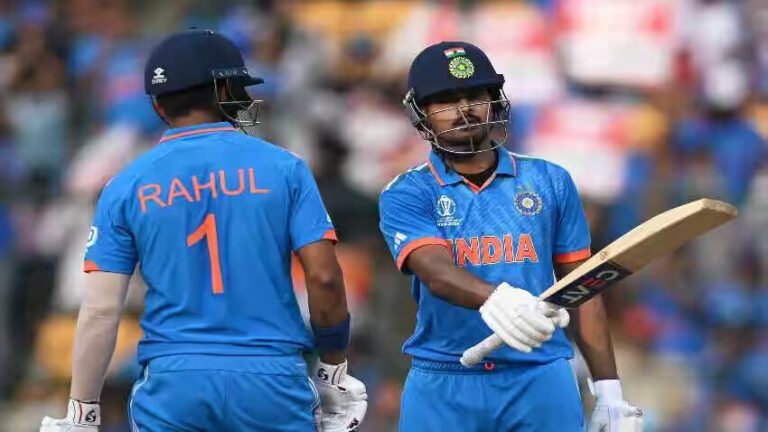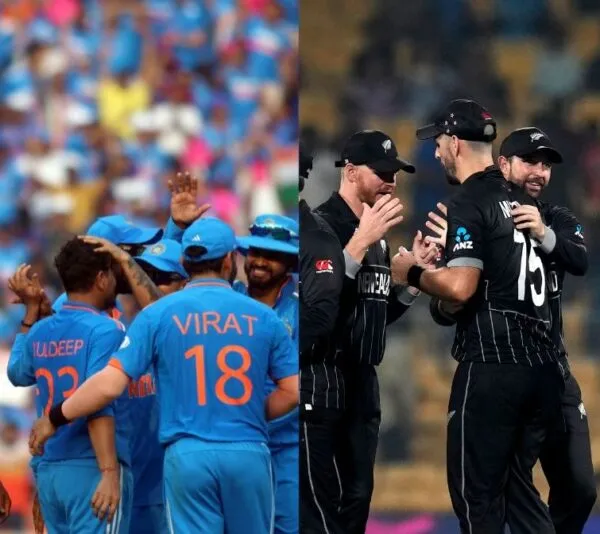In India, cricket is not merely a pastime—it’s a heartfelt connection, a binding force, and often, a nationwide fervor. Over the years, Indian cricket’s evolution has been a dazzling transformation. The nation’s rise from being underestimated contenders to becoming the indisputable rulers of the cricket sphere is a riveting saga marked by determination, tactical advancement, and unmatched enthusiasm. This exploration dives deep into the phenomenal ascent of Indian cricket, highlighting the luminaries like Rohit Sharma and Virat Kohli, the team’s international preeminence, record-shattering achievements, and the contrasting trajectories of their enduring adversaries, Pakistan.
Table of Contents
Foundations of Indian Cricket: From Colonial Beginnings to National Ambitions

India Won Champions Trophy 2025
Cricket in India took root during the British colonial period, initially blossoming as a leisure activity for the colonial upper crust and a privileged few within Indian nobility. As a symbol of British tradition, the sport gradually intertwined with the social texture of India. Nevertheless, India’s early foray into the global cricket scene was riddled with hurdles. The country faced a deficit in cricketing infrastructure, scarce professional coaching, and limited interaction with international standards.
These foundational barriers led to persistent struggles and inconsistent results on the world stage. Victories were few and irregular, and a struggle for consistency painted a picture of a team striving to find stability amidst cricket’s established powers. The era preceding 1983 was marked by perseverance and emerging talent, yet largely narrated a struggle against the giants of cricket.
The Critical 1983 Era: A Dramatic World Cup Victory
The year 1983 stands as a pivotal landmark in the chronicles of Indian cricket. The unexpected victory at the 1983 Cricket World Cup was a cultural and psychological revolution beyond a sports achievement. Under the inspirational leadership of Kapil Dev, the Indian squad, a mix of unrefined talent and steadfast spirit, confounded all forecasts by defeating the seemingly unbeatable West Indies in the final at Lord’s.
This accomplishment was more than an upset; it was the dawn of a cricketing behemoth. This triumph injected newfound confidence and aspirations into Indian cricket, showcasing to the nation and the world that India possessed the potential to challenge and vanquish cricket’s fiercest adversaries.
The 1983 World Cup victory ignited the flames of a cricketing revolution in India, setting the stage for future supremacy and demonstrating the dormant potential awaiting the right moment to erupt into the international limelight.
Rise of Indian Cricket Icons: Crafting a Legacy of Greatness
As the 20th century waned, Indian cricket stood on the verge of a golden age, heralding the rise of players who would redefine the game for an entire nation. This epoch witnessed the advent of cricketing legends destined to pen a glorious chapter in the annals of Indian cricket history. Among these stars, Sachin Tendulkar gleamed the brightest.
Often revered as the ‘God of Cricket’, Tendulkar commenced his international career in 1989, bearing the aspirations of a billion admirers on his young shoulders. His unmatched skill, unwavering resolve, and voracious quest for runs etched a legacy that would inspire generations to come. Tendulkar’s achievements are not mere statistics; they are mileposts of endurance, artistry, and pure cricketing genius. His presence commanded respect, his performances were nothing short of masterclasses.
He epitomized the aspirations of Indian cricket, proving that India could not only compete but also dominate on the world stage. This period was not solely about individual brilliance; it was also about establishing a new standard of excellence in Indian cricket, paving the path for future generations to follow and surpass.
Rohit Sharma: The Maestro of Pull Shots
Rohit Sharma, endearing referred to as “The Hitman,” embodies the modern, assertive yet graceful batting style that defines today’s Indian cricket. Sharma has revolutionized the role of an opening batsman with his sheer power, effortless grace, and extraordinary precision. His capability to dissect bowling attacks with a mix of audacious strokes and strategic aggression has made him a cornerstone of India’s batting order.
Sharma’s records are awe-inspiring, particularly his unprecedented multiple double centuries in One Day Internationals, a landmark unmatched in cricket’s history. These epic innings not only reflect his ability to score but also signify his sheer dominance and potential to single-handedly alter a match’s course.
Rohit’s composure, balance, and tactical awareness have been pivotal to numerous Indian triumphs, particularly in high-pressure tournaments. His leadership acumen, marked by a calm demeanor in adversity, has been vital in steering India to victories, cementing his status as a contemporary legend and a beacon for aspiring cricketers.
Virat Kohli: The Daring Prodigy of Contemporary Cricket
Virat Kohli’s rise to cricketing stardom is a tale woven with fierce ambition, unyielding effort, and extraordinary talent. His trajectory has been meteoric, metamorphosing from a promising youth to arguably the world’s finest modern batsman. Globally praised for his formidable batting technique, aggressive stance, and dynamic leadership, Kohli has consistently raised the bar in the cricketing realm, standing atop modern cricketing excellence.
His stint as captain was characterized by astute strategies and unwavering mental resolve, propelling India to unprecedented peaks in Test cricket and across all formats. Kohli’s insatiable hunger for runs, exemplary fitness, and infectious passion for the game make him a formidable force against any opponent, under any conditions. Beyond his personal triumphs, Kohli instilled a culture of winning and relentless pursuit of excellence within the Indian team, inspiring them to reach novel heights of success.
Dominating on the World Stage: From Home Stronghold to Foreign Triumphs
India’s metamorphosis into a cricketing behemoth is most vividly demonstrated by their unassailable dominance on home soil. The subcontinent’s conditions, characterized by spin-friendly pitches and an electrifying environment charged by passionate local fans, have been expertly utilized by India.
They have transformed home venues into impenetrable bastions. Spin bowling, a traditional Indian forte, becomes formidable in these surroundings, often overwhelming visiting sides. This home advantage extends beyond favorable conditions; it includes the psychological edge of familiar environments, supported by enthusiastic crowds.
India’s recent decades of home performances underscore this dominance, amassing series victories against nearly every major cricketing nation, often in decisive style. This home mastery is a cornerstone of India’s rise to the summit of global cricket, making it an intimidating task for any team to tour India.
Overcoming Foreign Frontiers: A Tribute to Adaptability
Equally crucial, if not more so, is India’s remarkable evolution in conquering formidable challenges in varied and often alien foreign terrains. Historically, Indian teams were seen as faltering on faster, bouncier pitches in cooler climates. Yet, the contemporary Indian team has displayed a remarkable ability to adapt and excel across diverse conditions worldwide. This newfound versatility symbolizes their maturation and comprehensive cricketing prowess.
India has secured historic series wins in cricketing powerhouses like Australia and South Africa, regions once deemed impregnable for Indian teams. These victories are more than isolated successes; they represent a fundamental shift in India’s cricketing capabilities. They highlight the team’s enhanced pace bowling resources, improved fielding standards, and a batting lineup capable of weathering pressure and performing consistently in challenging conditions. This ability to triumph abroad solidifies India’s status as a global cricketing power, capable of dominating in any corner of the world.
ICC Event Triumphs: Thriving Amidst Pressure
India’s steady and commanding showings in major ICC tournaments underscore their resilience and outstanding ability to flourish under the immense pressures of global events. Victories in prestigious tournaments such as the ICC T20 World Cup (2007), ICC Cricket World Cup (2011), and most recently, ICC Champions Trophy 2025, highlight India’s prowess in high-stakes environments.
These triumphs extend beyond just winning trophies; they attest to the team’s mental toughness, strategic sophistication, and collective excellence. Each success in these global tournaments has been celebrated fervently across the nation, sparking passion and fueling dreams among millions of cricket enthusiasts. These victories have become integral pieces of India’s cricketing lore, strengthening their reputation as a team that not only competes but triumphs consistently on cricket’s grandest stages.
Exceptional Individual Brilliance: Records and Heroics
In addition to the collective euphoria of team victories, Indian cricketers have consistently astounded spectators with spectacular individual performances, frequently penning and rewriting cricketing history. Icons such as Rohit Sharma and Virat Kohli have often adorned cricket’s historical records with their extraordinary feats. Rohit Sharma’s dazzling innings, distinguished by massive sixes and graceful shots, and Virat Kohli’s splendid, record-breaking run chases, have achieved legendary status.
In the recent ICC Champions Trophy 2025 final against New Zealand on March 9, 2025, Rohit Sharma once more displayed his match-winning prowess, scoring a crucial 76 runs from 83 balls, securing a solid foundation for India’s successful pursuit of 252 runs. Virat Kohli, throughout the tournament, showcased exceptional form, accumulating 217 runs in merely four matches, including a century against Pakistan and an essential 84 in the semi-final against Australia. These individual heroics, alongside consistent team performances, have added a vibrant and indelible hue to the collective triumphs of Indian cricket, making it a spectacle of both team unity and individual excellence.
The Decline of Pakistan Cricket: A Stark Contrast
The cricketing rivalry between India and Pakistan has always been more than a mere sporting competition; it’s a high-stakes clash laden with historical, political, and cultural essence. Matches between these two nations are among the most watched and fervently followed cricketing spectacles globally. Yet, in recent times, this rivalry has been marked by a stark divergence in paths.
While Indian cricket has escalated to unparalleled heights, Pakistan cricket has faced a spectrum of challenges, leading to a discernible decline in their global stature. This contrast goes beyond match outcomes, encompassing the entire cricketing ecosystem, including infrastructure, governance, and team dynamics. What were once fiercely contested duels now depict a growing disparity, with India consistently outperforming Pakistan on the field and in ICC tournaments. This shift highlights a significant chapter in the history of this iconic rivalry, underscoring the differing fortunes of these cricketing nations.
Pakistan’s Internal Strife and Multifaceted Challenges
Pakistan cricket is currently traversing a complicated web of challenges that have collectively contributed to its decline on the international stage. These challenges range from internal administrative issues to external factors impacting the game’s growth and consistency. Inconsistent selection processes have been repeatedly identified as a major hurdle, leading to instability and a lack of cohesion within the team.
A lack of cricketing infrastructure, especially at grassroots levels, has hampered the development of stable talent pipelines. Furthermore, security concerns have significantly disrupted Pakistan cricket over the years, curtailing international home matches for extended periods. This isolation from hosting international cricket at home not only affected revenue streams but also deprived Pakistani players of the advantage of playing in familiar environments and in front of home crowds. These multifaceted challenges have collectively contributed to Pakistan’s inconsistent performances in global tournaments and bilateral series, painting a picture of a cricketing nation grappling with considerable systemic and performance-related issues.
To compound their issues, during the recent ICC Champions Trophy 2025, held in Pakistan (with India’s matches played in Dubai due to security concerns), the Pakistan team failed to exploit home advantage, exiting in the group stage without a single victory. This performance further underscores the depth of the challenges facing Pakistan cricket. The absence of any Pakistan Cricket Board (PCB) official during the Champions Trophy final presentation ceremony, despite Pakistan being the host nation, was criticized by former Pakistani cricketers like Wasim Akram and Shoaib Akhtar, highlighting administrative and representational issues.
Conclusion: A Tale of Two Cricketing Nations
Indian cricket’s extraordinary ascent is far beyond just a sporting success story; it is a formidable display of the nation’s growing spirit, immense potential, and unwavering determination. From the historic 1983 World Cup victory under Kapil Dev’s leadership to the current era dominated by legends like Rohit Sharma and Virat Kohli, India has meticulously carved a cricketing legacy that serves as an enduring source of inspiration for countless aspiring cricketers and a nation of ardent fans. India’s journey is a continuous tale of improvement, strategic adaptation, and nurturing a winning mindset, transforming it into a cricketing powerhouse.
Conversely, the ongoing struggles of Pakistan cricket serve as a poignant reminder of the complex interplay between sportsmanship, effective governance, and the broader socio-political landscape. While India continues its relentless quest for sustained cricketing supremacy, its storied and intensely followed rivalry with Pakistan remains an evocative and eternally captivating chapter in cricket’s rich historical tapestry. This rivalry, marked by fierce competition and contrasting fortunes, is destined to remain a topic of scrutiny, analysis, and passionate celebration for generations of cricket enthusiasts to come. The cricketing world observes with anticipation as both nations navigate their unique paths in this evolving sport, their stories intertwined yet strikingly different.



